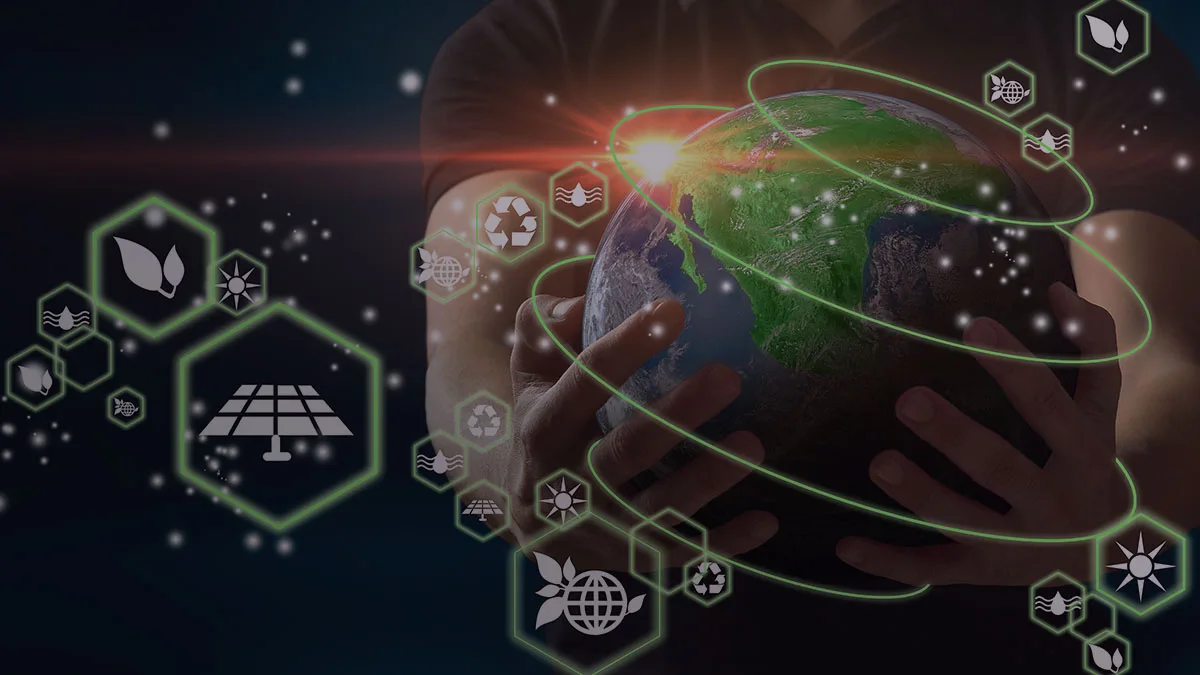What does Eco-Design mean and why it’s important to businesses and the environment?

Eco-design describes a process of development, which considers environmental considerations at every stage of the evolution process with regards to products and services.
It aims at reducing the ecological footprint of a product throughout its lifecycle; 80% of total environmental impact is determined at the design phase.
Eco-design is fully embedded in the circular economy view that understand that these end-of-life products make future ones while considering such lifecycle and next possible uses during their creation.
Key factors and instances of Eco-Design – environmental aspects
Among other things, eco-design focuses on several aspects about a product such as:
- Less materials – use less energy during manufacturing hence reduces resource depletion and emissions.
- Recyclability – choosing materials that are easily identifiable, reusable, or recyclable should be prioritized to simplify product disassembly, reduce raw material extraction, minimize energy consumption, and produce less waste.
- Use bio-materials – this could mean either one type of material or bio-degradable natural derivative material.
- Durability – a sustainable material with form shape other than any others for extending life cycle by lasting longer than competitors will make this product last longer.
- Multiple use/reuse/recyclability – the better products exist for more than one purpose including reusability where they are also made from recyclable raw materials.
- Emission reduction – smallest size of goods has positive impact on “greenhouse effect” due to transportation savings in terms of fuel consumption thus reducing CO2 emission.
- Innovation – technological inventions introduce efficiency in goods use and their sustainable maintenance.
- Green message – sustainable design spreads sustainably through subtle messages inherent in an object itself.

Integrating eco-design into business strategies is not only a step towards sustainability but also a crucial element in building a competitive edge. Consumers are increasingly choosing brands that demonstrate environmental responsibility, which drives companies to adopt a long-term perspective. Additionally, in the face of stringent sustainability regulations, eco-design has become essential. It enables companies to not only meet current legal requirements but also prepare for future changes, thereby minimizing risks and establishing a lasting market position.
Examples of Eco-Designs
Examples include biodegradable furniture (e.g., Kartell’s bioplastic products), edible coffee cups, and cutlery (e.g., Twiice), bamboo sunglasses from Panda, and toothbrushes made from ocean-recovered plastic by The Ocean Cleanup (https://theoceancleanup.com/). In the apparel industry, there is an increasing availability of clothing and footwear made from recycled materials (e.g., Patagonia) and jewelry crafted from organic gold (e.g., Fairmined), as highlighted in the article at https://www.forbes.com/sites/jiawertz/2024/03/09/sustainability-has-gone-mainstream-across-industries/.
Even fast fashion brands are moving towards sustainable solutions, while companies dedicated exclusively to designing eco-friendly clothing and accessories are becoming more popular. Additionally, zero-waste stores focusing on eco-friendly brands and reusable products are gaining traction.
Certification for sustainable design
There are several eco-design principles that confirm the sustainability of products:
Cradle to Cradle (C2C)
This standard evaluates the environmental performance of designs across five key areas: material health, material reutilization, renewable energy use, water management, and social fairness. To obtain Cradle to Cradle certification, a company must undergo an audit conducted by an accredited certification body. The product is assessed based on these criteria and receives certification at one of five levels: Basic, Bronze, Silver, Gold, or Platinum.
ISO 14001
This is an international standard for environmental management systems (EMS). This certification confirms that a company is committed to environmental protection and takes actions to minimize its environmental impact, including during product design.
To obtain ISO 14001 certification, a company must implement an environmental management system in accordance with the standard’s requirements and pass an audit conducted by an independent certification body recognized by ISO.
Achieving and maintaining certifications and standards for sustainable design is a demanding process, but it offers both reputational and operational benefits, supporting companies in sustainable development and social responsibility.

Business advantages of Eco-Design
Some of the advantages that businesses can get from using eco-design include:
- Cost savings
There are huge savings in the long run through eco-design. The use of fewer inputs and energy during manufacturing process helps manufacturers cut costs by reducing emissions and increasing efficiency. - Brand image and reputation
By adopting this type of practices, company becomes responsible corporate citizens who think ahead hence enhancing their brand’s reputation. - Competitive edge
As customers learn more about environmental effects of their choices, companies offering sustainable products or services will have advantage over others. - Regulatory compliance
Today’s tight legislation on sustainability means business cannot afford not to do eco-design if they want to avoid being penalized by regulators.

Eco-Design and PLM = ecoPLM
The ecoPLM offering from TT PSC is a holistic approach for sustainable product development. It helps companies manage their products in a manner which remains sustained through design and development, production, use and end-of-life. Incorporating sustainable materials into their PLM systems enables firms to produce environment-friendly, economically viable products that meet regulatory requirements.
You can learn more about life cycle analysis and sustainable innovation from our article: https://ttpsc.com/en/blog/navigating-through-the-systematic-approach-of-sustainable-product-design/

Based on:
